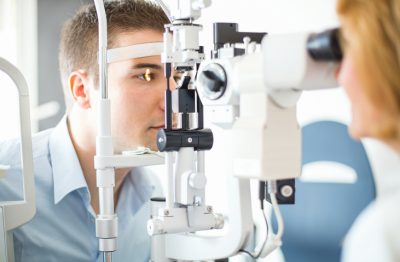Cardiologist Andalusia: Holistic Strategy to Heart and Eye Health And Wellness
Cardiologist Andalusia: Holistic Strategy to Heart and Eye Health And Wellness
Blog Article
Recognizing the Different Vision Adjustment Procedures Available for Clearer View
In the world of vision adjustment procedures, a plethora of choices exist to deal with refractive mistakes and supply individuals with more clear view. From the widely identified LASIK surgical procedure to less intrusive procedures like PRK and implantable lenses, the area of ophthalmology uses a series of strategies tailored to match various needs and choices. Each procedure includes its own set of factors to consider, benefits, and possible dangers. Understanding the subtleties of these vision correction approaches is important for making informed decisions concerning one's visual wellness. Let's discover the intricacies of these treatments and shed light on the course to achieving boosted vision clearness.
LASIK Surgical Procedure
LASIK surgical treatment is an usual refractive treatment used to remedy vision troubles such as astigmatism, farsightedness, and nearsightedness. This surgical technique, which means Laser-Assisted sitting Keratomileusis, intends to improve the cornea to boost how light is concentrated on the retina, eventually improving vision clearness. Throughout the procedure, a thin flap is created on the cornea, and a laser is used to remove accurate amounts of tissue to reshape it properly. This reshaping enables for light to be properly concentrated onto the retina, dealing with refractive mistakes.
Among the primary benefits of LASIK surgery is the rapid enhancement in vision experienced by patients. Numerous people observe a considerable enhancement in their vision instantly after the procedure. In addition, most clients report very little discomfort and pain throughout the surgery and healing period. The recovery time for LASIK is relatively fast, with several individuals going back to their daily activities within a day or 2 post-operation. In general, LASIK surgical procedure is a popular selection for people seeking a long-term solution for their vision troubles.
PRK Procedure

PRK is an ideal option for individuals with slim corneas or those at a higher threat of eye injuries, as it does not involve producing a corneal flap. The recuperation process for PRK is somewhat longer contrasted to LASIK, as the epithelium requires time to restore. Patients might experience discomfort and blurred vision for a couple of days following the procedure.
In spite of the longer recuperation time, PRK can generate excellent cause vision improvement, making it a useful option for those that might not appropriate prospects for LASIK surgery. - Neurologist Andalusia
Implantable Lenses
Unlike PRK where the cornea is reshaped directly, implantable lenses provide one more technique for remedying vision by putting fabricated lenses inside the eye. This treatment is specifically valuable for people with high levels of farsightedness, nearsightedness, or astigmatism who may not be appropriate candidates for laser surgeries like LASIK or PRK.
Implantable lenses, also known as phakic intraocular lenses, job by supplementing the eye's all-natural lens with a synthetic one. These lenses can be placed in front of the all-natural lens (former chamber) or behind the iris and before the natural lens (posterior chamber) By adjusting the power and positioning of these lenses, ophthalmologists can effectively deal with refractive mistakes and enhance aesthetic skill.
One advantage of implantable lenses is that they are exchangeable and removable, providing versatility for future modifications. As with any medical procedure, there are threats included, such as infection or cataract development. Individuals thinking about implantable lenses pop over to this site need to seek advice from with an eye care expert to determine one of the most suitable choice based on their private demands and eye health and wellness.
Corneal Rings

The procedure for placing corneal rings is minimally intrusive and relatively quick, frequently done as an outpatient treatment. During the surgical this contact form treatment, the eye doctor makes a tiny laceration in the cornea and inserts the rings at a specific depth. Once in place, the rings help to reshape the cornea, offering a smoother surface for light to go into the eye, which can lead to clearer vision.
Corneal rings are thought about a reversible procedure, as they can be removed or replaced if necessary. While they may not entirely eliminate the need for glasses or contact lenses, corneal rings can substantially enhance vision high quality and general visual comfort for individuals with keratoconus or other corneal abnormalities.
Refractive Lens Exchange
Adhering to the improvement of corneal abnormalities with procedures like corneal rings, one more vision adjustment strategy that can deal with refractive mistakes is Refractive Lens Exchange (RLE) RLE is an operation that includes changing the eye's natural lens with an artificial intraocular lens (IOL) to remedy refractive mistakes such as nearsightedness, farsightedness, and presbyopia. This treatment is especially helpful for individuals that may not be suitable prospects for procedures like LASIK or PRK as a result of aspects such as thin corneas or high refractive mistakes.
RLE is akin to cataract surgical procedure, as both include removing the Click This Link eye's natural lens; however, in RLE, the lens is clear, not gloomy as in cataracts. The artificial lens dental implanted during RLE can be personalized to address the person's specific refractive mistake, providing clear vision at different ranges. Recovery time for RLE is fairly fast, and clients can anticipate improved vision not long after the treatment. Similar to any type of procedure, potential dangers and complications exist, so a complete consultation with an eye care specialist is vital to figure out if RLE is the appropriate vision adjustment choice.
Conclusion

In the realm of vision improvement procedures, a multitude of alternatives exist to deal with refractive mistakes and give individuals with more clear sight.LASIK surgery is a typical refractive procedure made use of to fix vision troubles such as astigmatism, farsightedness, and nearsightedness.While likewise an usual refractive procedure, the PRK (Photorefractive Keratectomy) strategy differs from LASIK surgical procedure in its method to dealing with vision issues.Adhering to the adjustment of corneal abnormalities with treatments like corneal rings, one more vision improvement technique that can attend to refractive mistakes is Refractive Lens Exchange (RLE) LASIK surgery, PRK treatment, implantable lenses, corneal rings, and refractive lens exchange are all alternatives that can deal with various vision issues.
Report this page